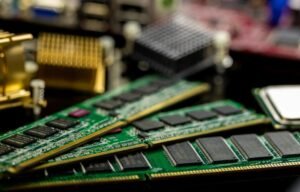GPT Vs MBR Partition: Which is Better for Your Computer?
When formatting your computer’s storage drive, you may come across the terms GPT and MBR partition. Understanding the differences between these two partition styles is important in order to make an informed decision on the best option for your needs.
Key Takeaways:
- GPT and MBR are two different partitioning schemes used to manage disk space on storage devices.
- GPT supports larger drives and allows more partitions compared to MBR.
- MBR is more compatible with older operating systems and BIOS systems.
- Both GPT and MBR have their own advantages and disadvantages, and the choice depends on your specific requirements.
Understanding GPT and MBR
GUID Partition Table (GPT) and Master Boot Record (MBR) are two different partitioning schemes used in modern computers. GPT is the newer and more advanced partitioning style, introduced with the UEFI (Unified Extensible Firmware Interface) firmware. On the other hand, MBR is the older partitioning style that has been in use for several decades.
GPT allows you to create up to 128 partitions, while MBR only supports 4 primary partitions.
GPT Partitioning
GPT partitioning provides numerous benefits over MBR for modern computers. Here are some advantages of using GPT partitioning:
- Support for larger drives: GPT supports drives larger than 2.2 terabytes, allowing you to fully utilize the capacity of modern high-capacity hard drives and SSDs.
- More partitions: With GPT, you can create up to 128 partitions on a single drive, offering greater flexibility in managing your data and operating systems.
- Data redundancy: GPT includes a backup of the partition table at the end of the disk, reducing the risk of partition table corruption and improving data safety.
Using GPT partitioning, you can fully utilize your 4 TB hard drive and create multiple partitions for different purposes.
| GPT Partitioning Benefits | |
|---|---|
| Supports larger drives | Yes |
| Number of partitions | Up to 128 |
| Data redundancy | Yes |
MBR Partitioning
Master Boot Record (MBR) partitioning has been widely used for many years. While it lacks some advantages of GPT, MBR can still be the right choice depending on your specific requirements:
- Compatibility: MBR partitioning is supported by all versions of Windows, making it compatible with a wide range of operating systems, including older ones.
- BIOS support: MBR is the only partitioning scheme supported by legacy BIOS systems, which are still in use on some older computers.
MBR partitioning is suitable for older systems and ensures easier compatibility with a wider range of operating systems, including Windows XP.
| MBR Partitioning Benefits | |
|---|---|
| Compatibility with Windows | Yes |
| Supports legacy BIOS | Yes |
Choosing the Right Partition Style
Deciding whether to use GPT or MBR partitioning depends on your specific needs. Consider the following factors when choosing the right partition style for your computer:
- Operating system and compatibility with different systems
- Drive size and capacity requirements
- Number of partitions needed
- UEFI or legacy BIOS system
Conclusion
The choice between GPT and MBR partitioning ultimately depends on your specific requirements and system configuration. Both partitioning schemes have their own advantages and disadvantages, and it’s important to weigh them against your needs to make an informed decision. Consider the compatibility, drive size, and the number of partitions needed before choosing the right partition style for your computer.

Common Misconceptions
GPT Vs MBR Partition
There are several common misconceptions surrounding the choice between GPT (GUID Partition Table) and MBR (Master Boot Record) partitioning schemes. Let’s debunk a few of these myths:
- Myth 1: GPT is only necessary for drives larger than 2TB.
- Myth 2: MBR supports more operating systems than GPT.
- Myth 3: GPT is harder to set up and maintain than MBR.
Contrary to popular belief, GPT is not only useful for drives larger than 2TB. While it is true that GPT allows for a much larger maximum partition size compared to MBR, GPT also offers advantages such as improved data redundancy and support for more than four primary partitions.
- Fact 1: GPT supports maximum partition sizes of 9.4 zettabytes.
- Fact 2: MBR is limited to a maximum of four primary partitions.
- Fact 3: GPT provides better data redundancy through a secondary backup partition table called the “backup GPT”.
Another common misconception is that MBR supports more operating systems than GPT. In reality, modern operating systems, such as Windows 10, macOS, and various Linux distributions, all support both GPT and MBR partitioning schemes. The choice between the two is typically based on specific needs, such as the drive size and the desired number of partitions, rather than operating system compatibility.
- Fact 1: Windows 10, macOS, and Linux all support both GPT and MBR partitioning schemes.
- Fact 2: GPT is recommended for newer UEFI-based systems due to its support for larger drives and additional features.
- Fact 3: MBR is still commonly used on older legacy BIOS systems and works perfectly fine for smaller drives with fewer partitions.
The misconception that GPT is harder to set up and maintain than MBR is also widespread. While the partitioning process may differ slightly between the two schemes, modern tools and utilities simplify the task. Most operating systems provide user-friendly interfaces that guide users through the partitioning process, regardless of whether they choose GPT or MBR. The difficulty level of setting up and maintaining partitions depends more on the user’s familiarity with the chosen utility rather than the partitioning scheme itself.
- Fact 1: Modern tools and utilities make it straightforward to set up GPT or MBR partitions.
- Fact 2: User familiarity with the chosen partitioning utility is more crucial than the partitioning scheme itself.
- Fact 3: Most operating systems provide user-friendly interfaces for easy partitioning setup and maintenance.

GPT and MBR Partition: A Comparison of Features
When it comes to partitioning a hard drive, you may encounter two different types of partitioning schemes: GPT (Guid Partition Table) and MBR (Master Boot Record). Each has its own unique features and advantages. In this article, we will explore various aspects of these partitioning methods and compare them side by side. Below are 10 tables that provide insightful information about the differences and similarities between GPT and MBR partitions.
Partition Style
The table below illustrates the fundamental difference between GPT and MBR partitions in terms of their partition style:
| GPT Partition | MBR Partition |
|---|---|
| GUID-based partitioning scheme | Legacy partitioning scheme |
Supported Disk Size
One of the crucial factors to consider when choosing a partitioning method is the maximum disk size it can support. Take a look at the following table:
| GPT Partition | MBR Partition |
|---|---|
| Supports up to 18.4 million TB | Supports up to 2.2 TB |
Number of Primary Partitions
Primary partitions serve as the main volumes for data storage. The table below showcases the limitations on the number of primary partitions for each partitioning scheme:
| GPT Partition | MBR Partition |
|---|---|
| No limit on primary partitions | Supports up to 4 primary partitions |
Partition Recovery
Accidental data loss can be distressing, but certain partitioning methods provide better recovery options. Here’s the comparison:
| GPT Partition | MBR Partition |
|---|---|
| Backup partition table at the end of the disk | No backup partition table |
Compatibility with Old Operating Systems
If you often work with legacy operating systems, it’s important to know their compatibility with each partitioning scheme:
| GPT Partition | MBR Partition |
|---|---|
| Requires EFI firmware (Windows 7 64-bit, Windows 8/8.1/10, etc.) |
Compatible with BIOS firmware (Most Windows, Linux, and macOS versions) |
Partition Naming Convention
The table below highlights the format used to name partitions:
| GPT Partition | MBR Partition |
|---|---|
| Uses globally unique partition GUIDs | Named using letters (C:, D:, etc.) |
Protective MBR
Protective MBR is a unique aspect of GPT partitions. Let’s compare its presence in each partitioning scheme:
| GPT Partition | MBR Partition |
|---|---|
| Protective MBR exists | No protective MBR |
Boot Process
The boot process differs between GPT and MBR partitions. Take a look at the following table for a clear comparison:
| GPT Partition | MBR Partition |
|---|---|
| Stores system boot loader information in EFI System Partition (ESP) | Stores the Master Boot Record in the first sector of the disk |
Disk Layout and Partitioning Tools
In this table, we compare the disk layout and common partitioning tools used for both GPT and MBR partitions:
| GPT Partition | MBR Partition |
|---|---|
| Uses Protective MBR, PMBR (protective MBR) partition and partition entries | Relies on the Master Boot Record structure and partition table |
Data Integrity
Ensuring data integrity is crucial when dealing with partitions. Here’s the comparison between GPT and MBR:
| GPT Partition | MBR Partition |
|---|---|
| Uses cyclic redundancy check (CRC32) to verify partition table integrity | No built-in integrity check |
In conclusion, the choice between GPT and MBR partitioning schemes depends on several factors, such as the desired disk size, operating system compatibility, and the need for data recovery options. It is essential to understand the differences between the two methods and assess your specific requirements before deciding which partitioning scheme to use. By analyzing the comparisons provided in the tables above, you can make a well-informed choice that aligns with your needs.
Frequently Asked Questions
What is the difference between GPT and MBR partitions?
GPT (GUID Partition Table) and MBR (Master Boot Record) are different partitioning schemes used on computer hard drives. GPT is a newer and more advanced partitioning scheme than MBR.
What are the benefits of using GPT partitions?
GPT partitions offer several benefits over MBR partitions, including support for larger disk capacities, better data redundancy and recovery options, and improved security features.
Are GPT partitions compatible with all operating systems?
Most modern operating systems, including Windows, macOS, and Linux, support GPT partitions. However, some older operating systems may not fully support GPT, so it is important to check the compatibility before using GPT partitions.
Can I convert MBR partitions to GPT without losing data?
Yes, it is possible to convert MBR partitions to GPT without losing data, but the process is not straightforward and involves using specialized partitioning software. It is recommended to back up important data before attempting any partition conversion.
Which partition type is more suitable for UEFI-based systems?
GPT partitioning scheme is more suitable for UEFI-based systems as it supports the newer UEFI firmware. MBR partitions can also be used with UEFI systems, but they have some limitations and may require the use of compatibility support modules (CSM).
Can GPT partitions be used on external drives and removable media?
Yes, GPT partitions can be used on external drives and removable media, just like MBR partitions. Both partitioning schemes are compatible with external storage devices.
What happens if I mix GPT and MBR partitions on the same disk?
Mixing GPT and MBR partitions on the same disk can cause compatibility issues and may result in data loss or system instability. It is generally recommended to use either GPT or MBR for the entire disk.
How many partitions can be created with GPT and MBR?
GPT allows for up to 128 partitions on a single disk, whereas MBR supports a maximum of 4 primary partitions or 3 primary partitions and an extended partition.
Can I install multiple operating systems on GPT and MBR partitions?
Both GPT and MBR partitions can accommodate multiple operating systems. However, GPT partitions provide more flexibility and ease of management when installing and dual-booting multiple operating systems.
Which partitioning scheme should I choose for my new drive?
The choice between GPT and MBR partitions depends on several factors, including the system’s firmware (UEFI or legacy BIOS), the desired disk capacity, and the compatibility requirements of the operating systems to be installed. It is recommended to research the specific requirements of your system and consult the manufacturer’s guidelines before making a decision.




